Oil prices rebound sharply on smaller-than-feared OPEC+ output hike
Introduction & Market Context
IonQ Inc (NYSE:IONQ) presented its August 2025 investor update on August 6, following its Q2 2025 earnings announcement. The quantum computing pioneer reported Q2 revenue of $20.7 million, exceeding forecasts by 20.99%, but posted a larger-than-expected loss of $0.70 per share as it continues aggressive investments in research and development.
The presentation highlighted IonQ’s ambitions to lead the quantum computing revolution both technologically and commercially, with a focus on its expanding global footprint, technological roadmap, and growing commercial applications. The company’s stock closed at $41.23 following the earnings announcement, down 1.88% in aftermarket trading, reflecting investor concerns about the pace of spending despite strong revenue growth.
Strategic Initiatives & Acquisitions
IonQ has embarked on an aggressive expansion strategy, establishing a presence across five countries through strategic acquisitions. The company’s global footprint now includes operations in the United States, Canada, England, Switzerland, and South Korea, positioning it to capture market opportunities worldwide.
As shown in the following map of IonQ’s expanding global presence:
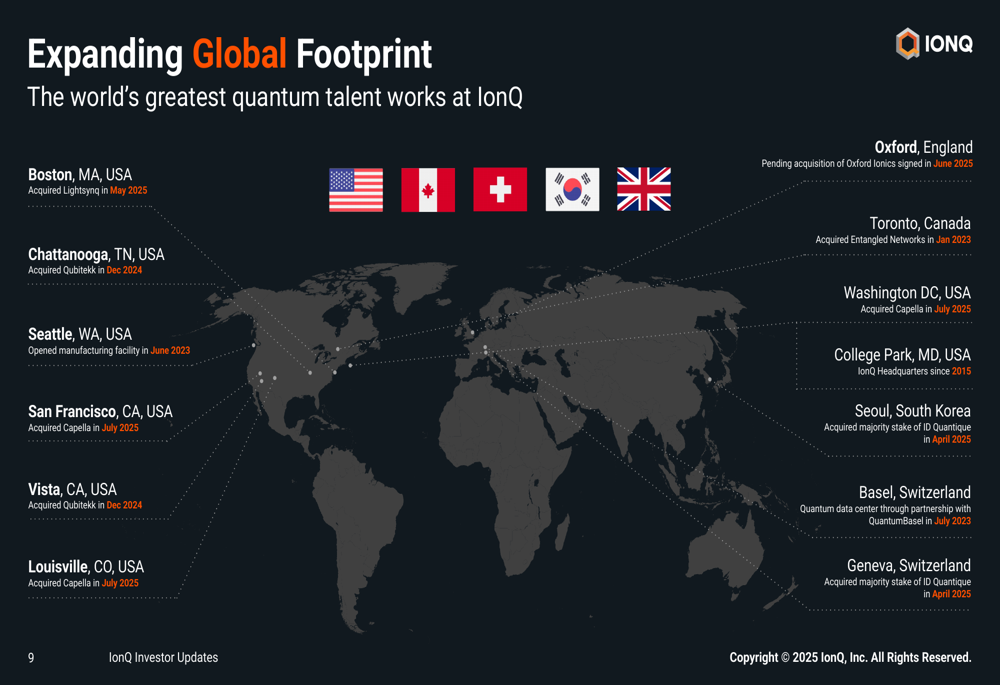
Recent acquisitions include Lightsynq Technologies (May 2025), which provides faster connections between quantum processing units; Oxford Ionics (pending acquisition signed in June 2025), which offers technology for more qubits per QPU at lower cost; Qubitekk (December 2024); and a majority stake in ID Quantique (April 2025). These acquisitions are central to IonQ’s strategy of integrating world-class talent and technology.
"We believe the steps we have taken in 2025 to date will ultimately set the stage for IonQ’s long-term leadership in both quantum computing and networking," said Niccolo DiMaffi, CEO of IonQ, during the earnings call.
The company has also built an impressive intellectual property portfolio to protect its technological advantages:

Technology Roadmap & Competitive Positioning
IonQ’s presentation emphasized its technological superiority over competitors, particularly in its trapped ion architecture which the company claims offers advantages in fidelity, connectivity, and error correction compared to superconducting architectures used by some competitors.
The following comparison highlights the key differences between IonQ’s trapped ion architecture and superconducting alternatives:

The company outlined an ambitious roadmap for scaling its quantum computing capabilities, projecting growth from 64-100+ qubits in 2025 to an impressive 2 million qubits by 2030. More importantly, IonQ expects to achieve 80,000 logical qubits by 2030, which would represent a significant advantage over competitors:
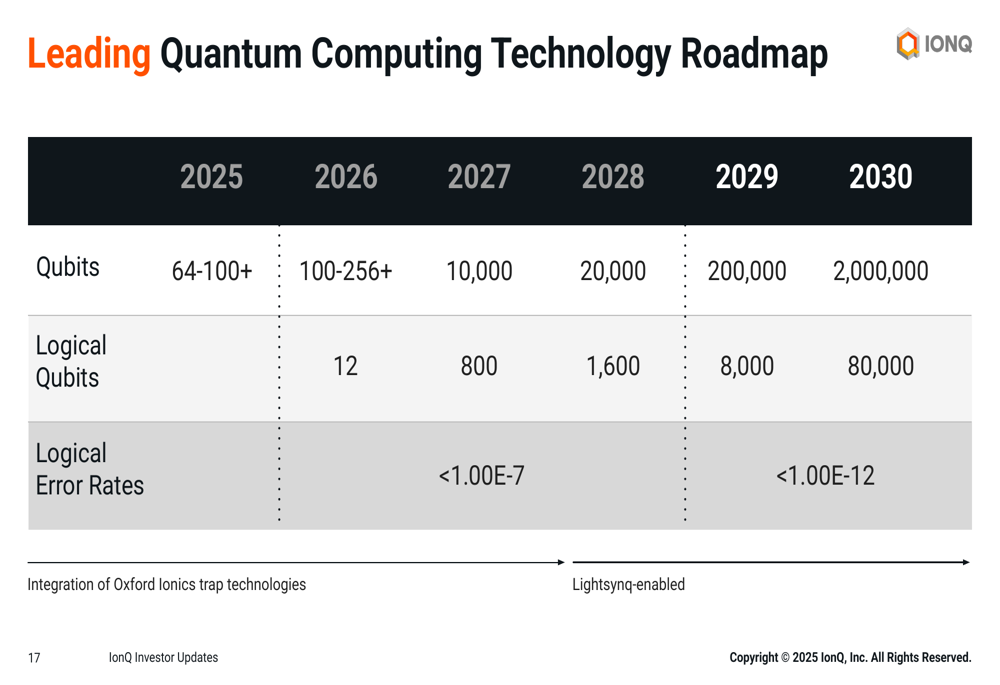
IonQ’s acquisition of Oxford Ionics is expected to play a crucial role in this scaling strategy by increasing qubit density on chips:
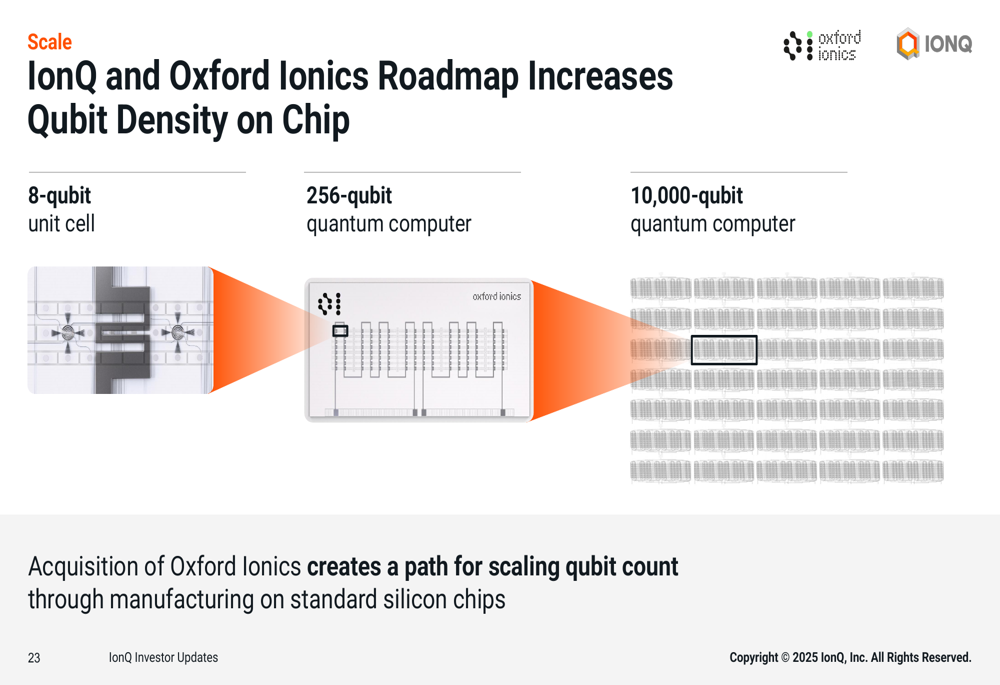
The company also highlighted its electronic qubit control technology, which enables precise control, faster operations, higher fidelity, and improved scalability:
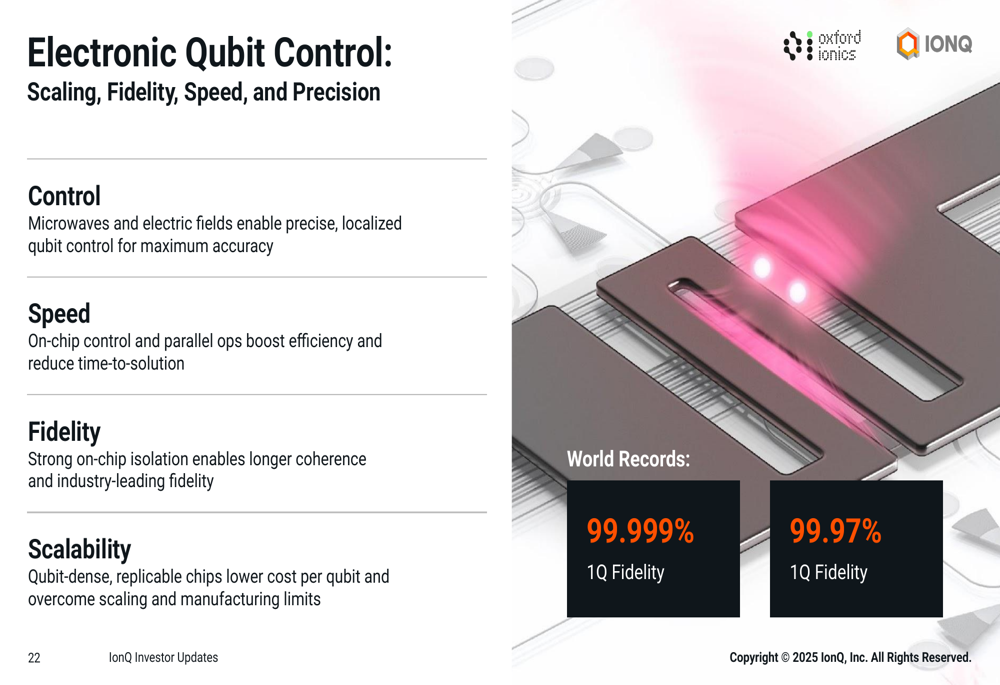
Commercial Applications & Ecosystem
IonQ is targeting several high-value application areas, including sustainability and environmental innovations:
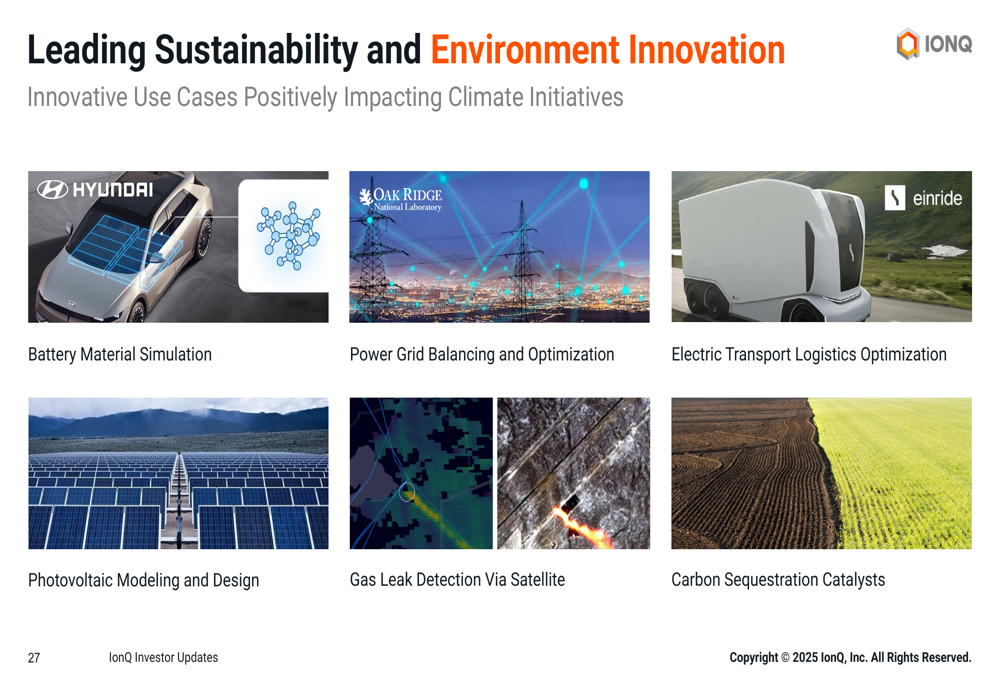
The company has established partnerships with major organizations to develop practical quantum computing applications. For example, IonQ is working with Ansys (NASDAQ:ANSS) on quantum-accelerated graph partitioning for finite element simulation, claiming up to 12% improvement over classical heuristics:

Another notable collaboration is with AstraZeneca (NASDAQ:AZN) for accelerating drug development through enhanced simulations, where IonQ’s solution reportedly provides results up to 20x faster:
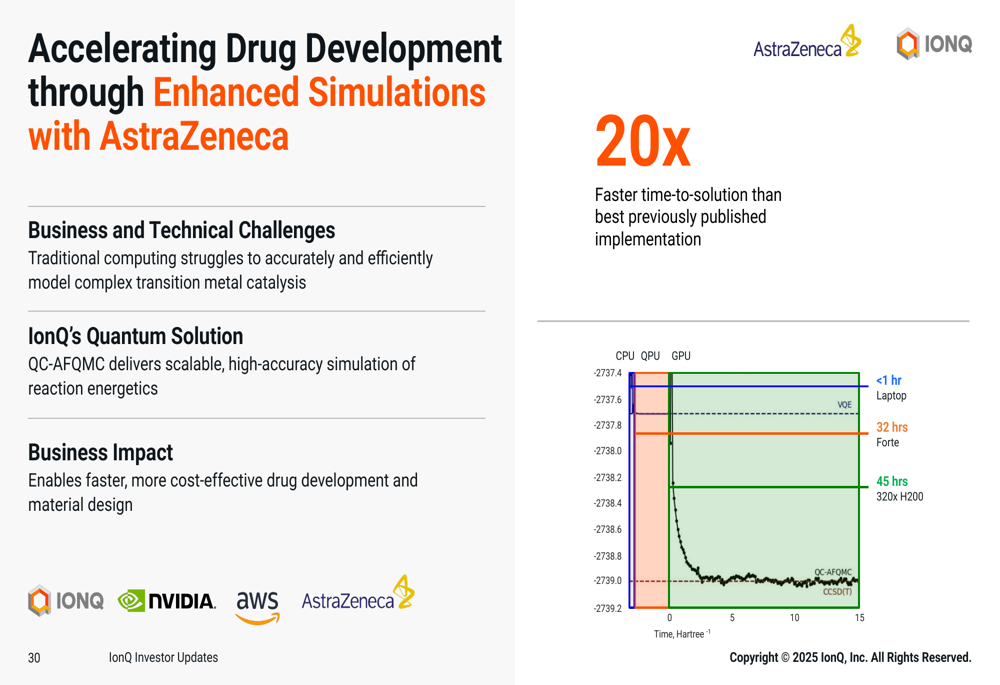
Financial Performance & Outlook
IonQ’s revenue has shown consistent growth since going public, with a compound annual growth rate (CAGR) of 175%. The company reported revenue of $1.6 million in 2021, growing to $43.1 million in 2024, and now projects 2025 revenue between $82 million and $100 million:
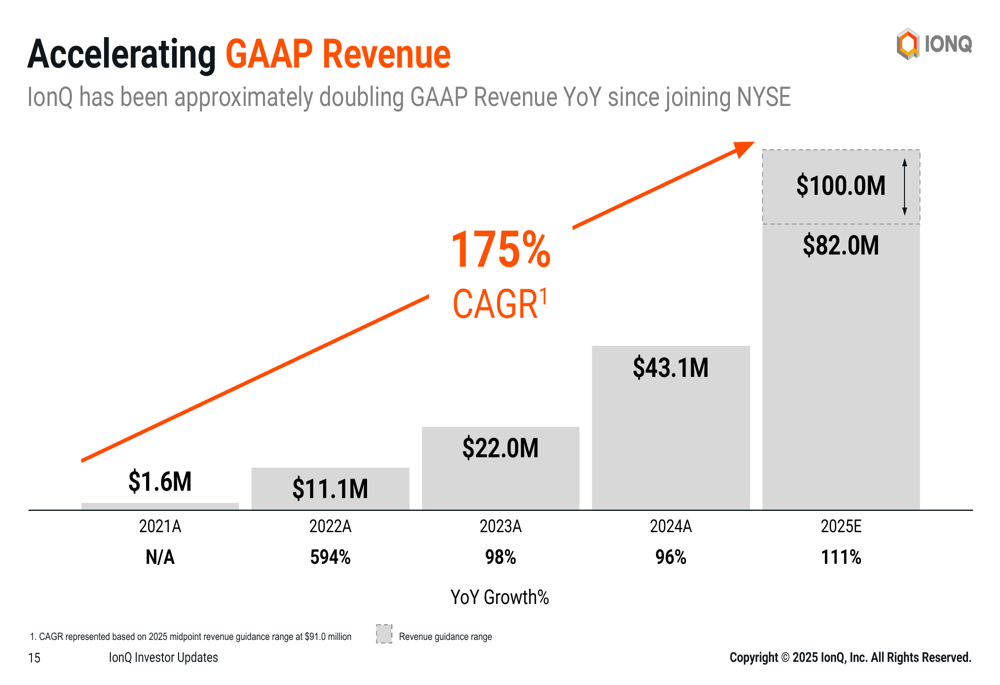
For Q3 2025, IonQ has provided revenue guidance of $25-$29 million. However, the company continues to invest heavily in R&D, with costs increasing by 231% year-over-year to $103.4 million in Q2 2025. This significant investment has contributed to an adjusted EBITDA loss of $36.5 million for the quarter, compared to $23.7 million in the prior year.
The company maintains a strong balance sheet with $1.6 billion in cash, cash equivalents, and investments, providing runway for continued investments in technology development and strategic acquisitions:
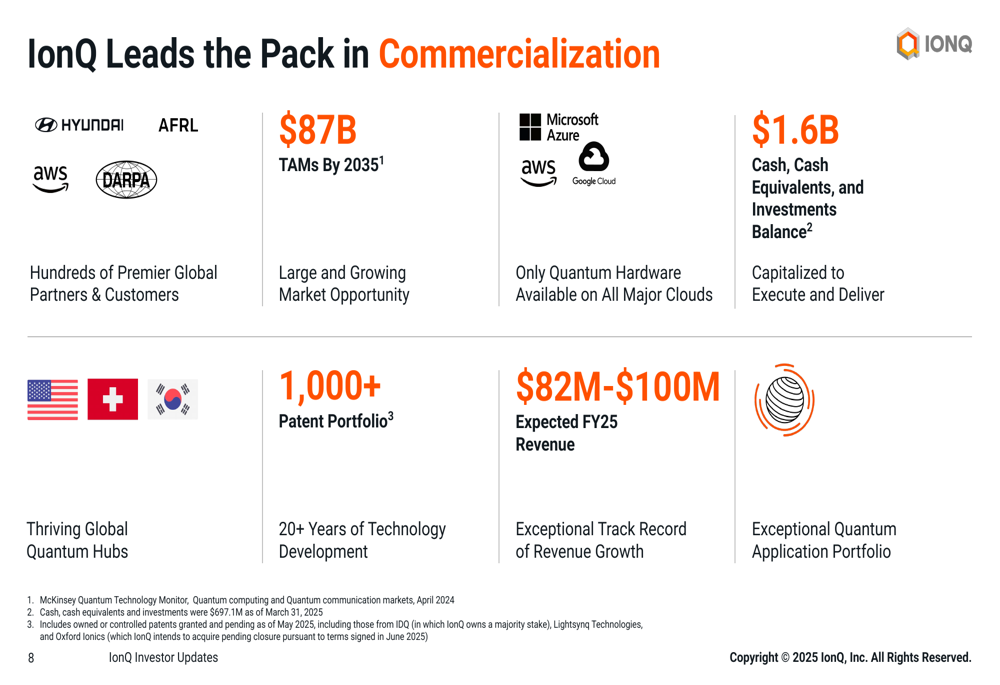
Forward-Looking Statements
IonQ’s presentation outlined an ambitious vision for the future of quantum computing and networking. The company is positioning itself to lead in both quantum computing hardware and the emerging quantum internet, which promises ultra-secure communications and networked quantum computation capabilities:
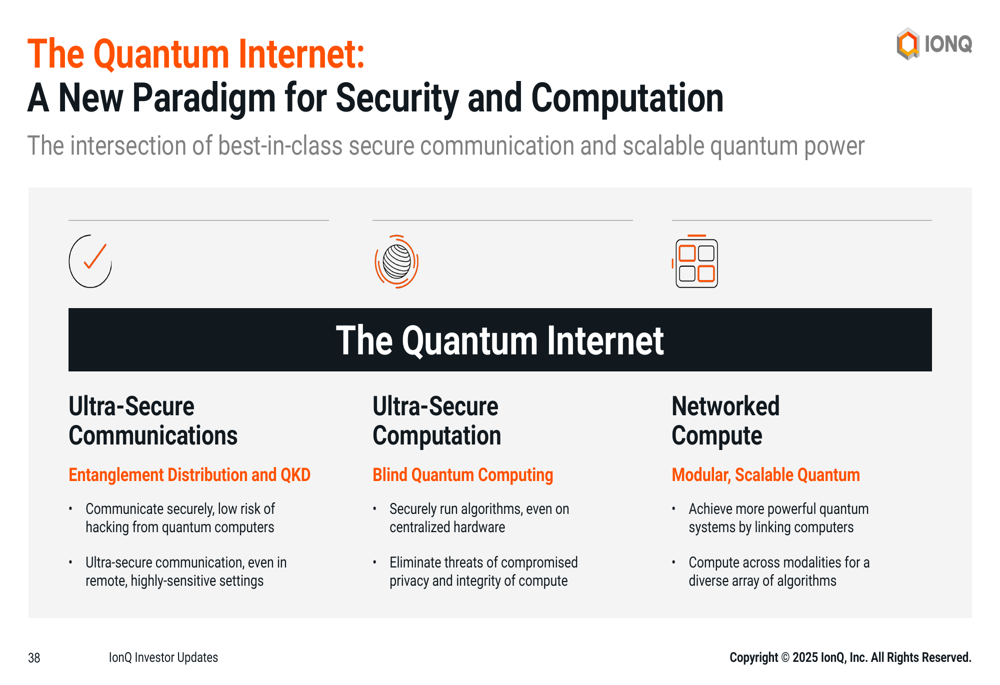
The company projects that its rapid scaling of logical qubits will enable it to address increasingly complex applications over time, potentially providing significant commercial advantages over competitors:

While IonQ’s revenue growth and technological roadmap are impressive, investors should note the significant ongoing investments required to achieve these ambitious goals. The larger-than-expected Q2 2025 loss of $0.70 per share and the 231% increase in R&D spending highlight the substantial resources being directed toward future capabilities rather than near-term profitability.
As Jordan Shapiro, President of Quantum Networking at IonQ, emphasized during the earnings call, "Quantum networking provides the ultimate in cyber security today," indicating the company’s focus on both near-term commercial applications and long-term technological leadership in the rapidly evolving quantum computing landscape.
Full presentation:
This article was generated with the support of AI and reviewed by an editor. For more information see our T&C.
